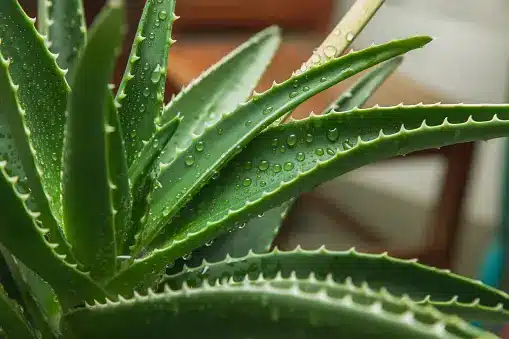Since ancient times, the aloe vera plant has been revered for its medicinal properties, providing a soothing balm for countless ailments. Beyond its therapeutic benefits, aloe vera adds a touch of elegance to any indoor space, with its verdant green leaves and striking architectural form. If you’re seeking to cultivate this versatile plant in your home, mastering how to propagate aloe is essential.
In this article, we will delve into the intricacies of propagating aloe vera, empowering you to expand your green thumb and enjoy the benefits of this natural wonder.
Table of contents
- Understanding the Propagation Process
- What Are The Soil Requirements For Aloe Vera Propagation?
- What Is The Ideal Temperature Range For Aloe Vera Propagation?
- How Often Should I Water My Newly Propagated Aloe Vera Plants?
- How Can I Distinguish Between Different Aloe Vera Varieties For Propagation?
- Are There Any Pest Or Disease Concerns Associated With Aloe Vera Propagation?
- Can I Propagate Aloe Vera From Pups Or Offsets Without Dividing The Mother Plant?
- FAQs
- Conclusion
- References
- Recommendations
Understanding the Propagation Process
Propagation techniques for aloe vera primarily revolve around division and leaf cuttings. Division involves separating mature aloe plants into smaller offshoots, while leaf cuttings utilize detached leaves to generate new plants. Both methods are relatively straightforward and can be successfully implemented by novice gardeners.
Read also: How Many Bananas Are There In A Bunch? Fully Explained
Propagation through Division
1. Selecting a Mature Plant:
Choose a healthy aloe vera plant with visible offshoots or pups, which are small plants growing at the base of the mother plant. Ensure the offshoots have developed their root systems before attempting division.
2. Carefully Removing Offshoots:
Gently loosen the soil around the base of the mother plant and carefully separate the offshoots, taking care not to damage their roots. Use a sharp knife to sever the connection if necessary.
3. Preparing for Planting:
Allow the separated offshoots to dry out for a few days to allow the cut to callous over, preventing rot. This will also give the roots a chance to heal.
4. Planting the Offshoots:
Fill individual pots with a well-draining potting mix specifically designed for cacti and succulents. Plant each offshoot in its pot, ensuring the roots are well covered with soil.
5. Providing Proper Care:
Water the newly planted offshoots thoroughly and place them in a warm, bright location with indirect sunlight. Monitor the soil moisture, allowing it to dry out slightly between waterings.
Propagation through Leaf Cuttings:
1. Selecting Healthy Leaves:
Choose healthy, mature leaves from the outer portion of the aloe vera plant. Avoid leaves that appear damaged or shriveled.
2. Preparing the Leaf Cuttings:
Use a sharp knife to cut the selected leaves close to the base of the plant. Allow the cut ends to dry out for a few days to callous over.
3. Planting the Leaf Cuttings:
Fill individual pots with a well-draining potting mix specifically designed for cacti and succulents. Place the calloused end of each leaf cutting into the potting mix, ensuring it stands upright.
4. Providing Proper Care:
Water the newly planted leaf cuttings sparingly, allowing the soil to dry out completely between waterings. Place them in a warm, bright location with indirect sunlight.
What Are The Soil Requirements For Aloe Vera Propagation?
Aloe vera thrives in well-draining, sandy soil that allows excess water to escape easily. Avoid heavy, clay-based soils that can retain too much moisture and lead to root rot. Opt for a specialized potting mix designed for cacti and succulents, ensuring optimal drainage and aeration for the newly propagated plants.
You should also see How Long Does it Take for Grass Seed to Grow: Gardening Patience Gauge
What Is The Ideal Temperature Range For Aloe Vera Propagation?
Aloe vera prefers warm temperatures, ideally between 70°F and 85°F (21°C and 29°C). Avoid exposing the newly propagated plants to temperatures below 50°F (10°C) or above 90°F (32°C), as these extremes can hinder their growth and development.
How Often Should I Water My Newly Propagated Aloe Vera Plants?
During the initial rooting phase, water the newly propagated plants sparingly, allowing the soil to dry out completely between waterings. Once the plants have established a strong root system and show signs of active growth, you can increase the watering frequency slightly. However, always avoid overwatering, as aloe vera is susceptible to root rot in overly moist conditions.
How Can I Distinguish Between Different Aloe Vera Varieties For Propagation?
Aloe vera varieties can be distinguished by their physical characteristics, such as leaf shape, size, and color. Aloe barbadensis miller, the most common variety, has thick, fleshy leaves with smooth edges and a distinctive greenish-gray hue. On the other hand, Aloe arborescens, also known as tree aloe, feature slender, tree-like growth and produces smaller leaves with serrated edges.
Are There Any Pest Or Disease Concerns Associated With Aloe Vera Propagation?
Aloe vera is generally resistant to pests and diseases. However, it is susceptible to mealybugs, which are small, white insects that feed on the sap of the plant. Mealybugs can be controlled using insecticidal soap or neem oil. Additionally, root rot can occur if the plants are overwatered or grown in poorly draining soil. To prevent root rot, ensure proper drainage and water the plants only when the soil is dry.
Read also: How to Divide Fractions with Whole Numbers: Mathematical Problem-Solving Skill
Can I Propagate Aloe Vera From Pups Or Offsets Without Dividing The Mother Plant?
Yes, propagating aloe vera from pups or offsets is a viable alternative to dividing the mother plant. Pups are small, fully-developed plantlets that grow at the base of the mother plant. Offsets are immature plantlets that form along the flower stalks. Both pups and offsets can be carefully removed from the mother plant and planted in individual pots with a well-draining potting mix. This method allows you to propagate new aloe vera plants without disrupting the growth of the mother plant.
See: Why Do Phospholipids Form A Bilayer In Water?
FAQs
Propagation time varies depending on the method used and environmental factors. For division, new growth may appear within a few weeks. For leaf cuttings, the rooting process can take several weeks or even months.
Maintain a consistent watering schedule and provide ample warmth and indirect sunlight. Avoid overwatering, as this can lead to root rot.
Signs of successful propagation include new growth emerging from the offshoots or leaf cuttings, and the development of healthy, fibrous roots.
Once the newly propagated plants have developed a strong root system and are showing signs of active growth, they can be transplanted into larger pots.
Overwatering, excessive direct sunlight, and using improper potting mix can hinder successful propagation. Additionally, avoid cutting into the inner gel of the leaves, as this can damage them and impede rooting.
Conclusion
Mastering the techniques of aloe vera propagation expands your indoor plant collection and cultivates a valuable source of natural healing. With patience, care, and the knowledge gained from this comprehensive guide, you can successfully propagate aloe vera and enjoy its soothing benefits for years to come.
References
- rosysoil.com – How To Propagate Aloe: A Complete Guide (Steps + FAQs)
- gardeningknowhow.com – Propagating Aloe Vera – Rooting Aloe Vera Cuttings Or Separating Aloe Pups






